Description
Two-stage turn queue boxes offer bicyclists a safe way make left turns at multi-lane signalized intersections from a right side cycle track or bike lane, or right turns from a left side cycle track or bike lane.Two-stage turn queue boxes may also be used at unsignalized intersections to simplify turns from a bicycle lane or cycle track, as for example, onto a bicycle boulevard. At midblock crossing locations, a two-stage turn queue box may be used to orient bicyclists properly for safe crossings. Multiple positions are available for queuing boxes, depending on intersection configuration.
Cycle track design often prevents bicyclists from merging into traffic to turn. This makes the provision of two-stage turns critical for basic transportation function. The same principles for two-stage turns apply to bike lanes as well.
While two stage turns may increase bicyclist comfort in many locations, this configuration typically results in increased delay for bicyclists. Bicyclists now need to receive two separate green signal indications (one for the through street, followed by one for the cross street) to turn. At unsignalized intersections this configuration may also increase delay for bicyclists due to the need to wait for appropriate gaps in crossing motor vehicle traffic.
Click on the images below to view 3D concepts of a two-stage turn markings. The configurations shown are based on Portland, OR, and Australian examples.
Treatment details can be accessed below under design guidance.
Two-stage Turn Queue Box Benefits
- Improves bicyclist ability to safely and comfortably make left turns.
- Provides a formal queuing space for bicyclists making a two-stage turn.
- Reduces turning conflicts between bicyclists and motor vehicles.
- Prevents conflicts arising from bicyclists queuing in a bike lane or crosswalk.
- Separates turning bicyclists from through bicyclists.
Typical Applications
- At signalized intersections.
- Along multi-lane roadways.
- Along roadways with high traffic speeds and/or traffic volumes.
- Where a significant number of bicyclists turn left from a right side facility.
- Along cycle tracks.
- To safely navigate streetcar tracks. Read More+
“Other innovative bicycle treatments are starting to gain popularity that also encourage a safer crossing angle at tracks, including the two-stage turn for bicyclists.”
Boorse, J., Hill, M., Danaher, A. (2011). General Design and Engineering Principles of Streetcar Transit. ITE Journal, 81(1), 38.
Design Guidance
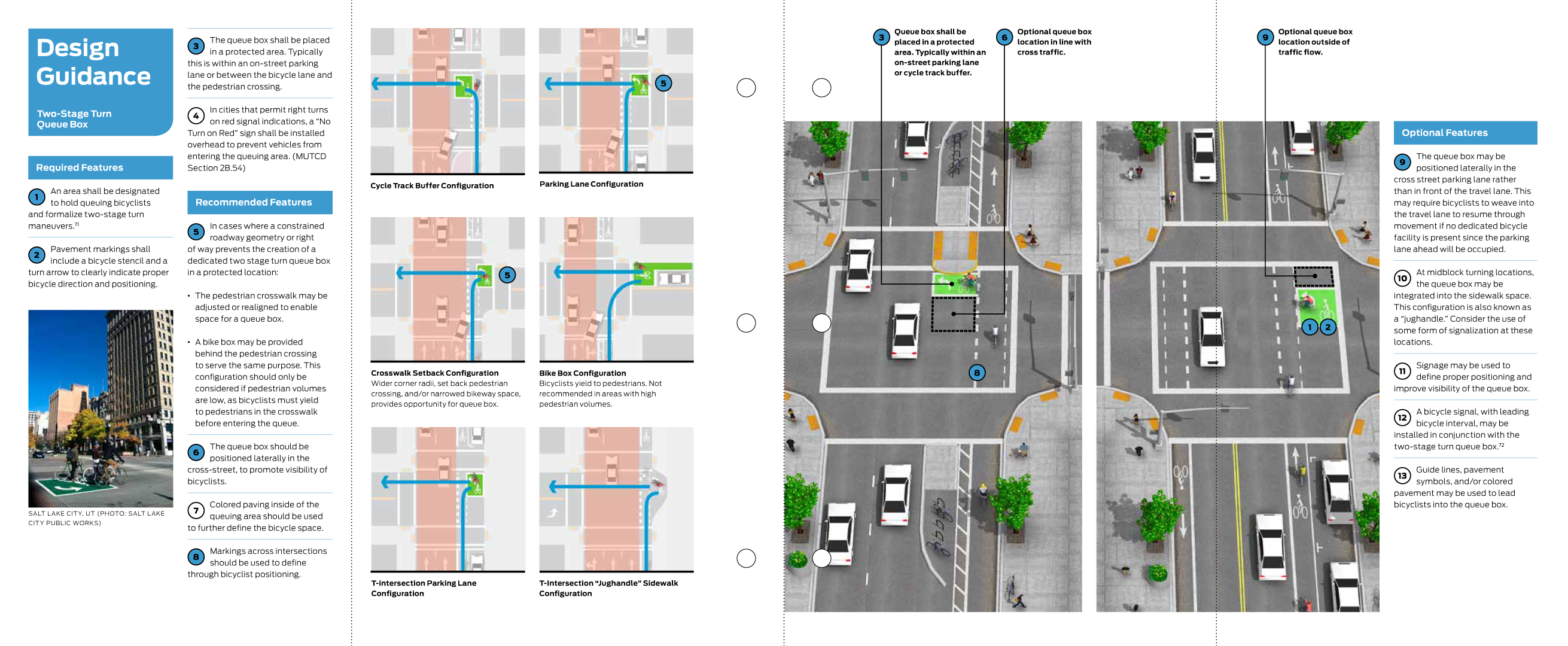
| Required Features |
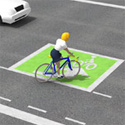 |
An area shall be designated to hold queuing bicyclists and formalize two-stage turn maneuvers. Read More+
“Bicycle Hook Turn Storage Areas should be up to 3.0 metres long and at least 1.0 metre wide.”
RTA. (2009). Bicycle Storage Areas and Advanced Bicycle Stop Lines. Technical Direction.
Stacking facility for bicyclists turning left at traffic control system: “depending on intensity, width of stacking area > 1.2 m.”
CROW. (2006). Record 25: Design Manual for Bicycle Traffic. CROW, The Netherlands.
|
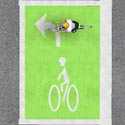 |
Pavement markings shall include a bicycle stencil and a turn arrow to clearly indicate proper bicycle direction and positioning. |
 |
The queue box shall be placed in a protected area. Typically this is within an on-street parking lane or between the bicycle lane and the pedestrian crossing. |
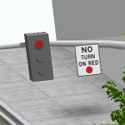 |
In cities that permit right turns on red signal indications, a “No Turn on Red” sign shall be installed overhead to prevent vehicles from entering the queuing area. (MUTCD Section 2B.54) Read More+
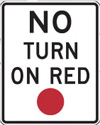 MUTCD R10-11 (shown), R10-11a, or R10-11b
|
| Recommended Features |
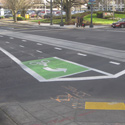 |
In cases where a constrained roadway geometry or right of way prevents the creation of a dedicated two stage turn queue box in a protected location:
- The pedestrian crosswalk may be adjusted or realigned to enable space for a queue box.
- A bike box may be provided behind the pedestrian crossing to serve the same purpose. This configuration should only be considered if pedestrian volumes are low, as bicyclists must yield to pedestrians in the crosswalk before entering the queue.
|
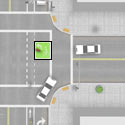 |
The queue box should be positioned laterally in the cross-street, to promote visibility of bicyclists. |
 |
Colored paving inside of the queuing area should be used to further define the bicycle space. |
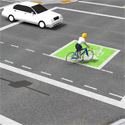 |
Markings across intersections should be used to define through bicyclist positioning. |
| Optional Features |
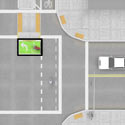 |
The queue box may be positioned laterally in the cross street parking lane rather than in front of the travel lane. This may require bicyclists to weave into the travel lane to resume through movement if no dedicated bicycle facility is present since the parking lane ahead will be occupied. |
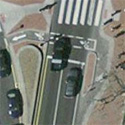 |
At midblock turning locations, the queue box may be integrated into the sidewalk space. This configuration is also known as a “jughandle.” Consider the use of some form of signalization at these locations. |
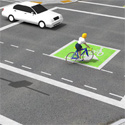 |
Signage may be used to define proper positioning and improve visibility of the queue box. |
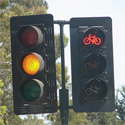 |
A bicycle signal, with leading bicycle interval, may be installed in conjunction with the two-stage turn queue box. Read More+
|
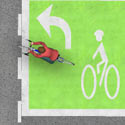 |
Guide lines, pavement symbols, and/or colored pavement may be used to lead bicyclists into the queue box. |
Maintenance:
- Colored pavement, if used, may be difficult to maintain in climates prone to snow and ice.
Treatment Adoption and Professional Consensus
- Commonly used in dozens of European bicycle friendly cities.
- Currently used in the following US cities:
- Atlanta, GA
- Cambridge, MC
- Philadelphia, PA
- Portland, OR
- New York, NY
- Salt Lake City, UT
- Chicago, IL